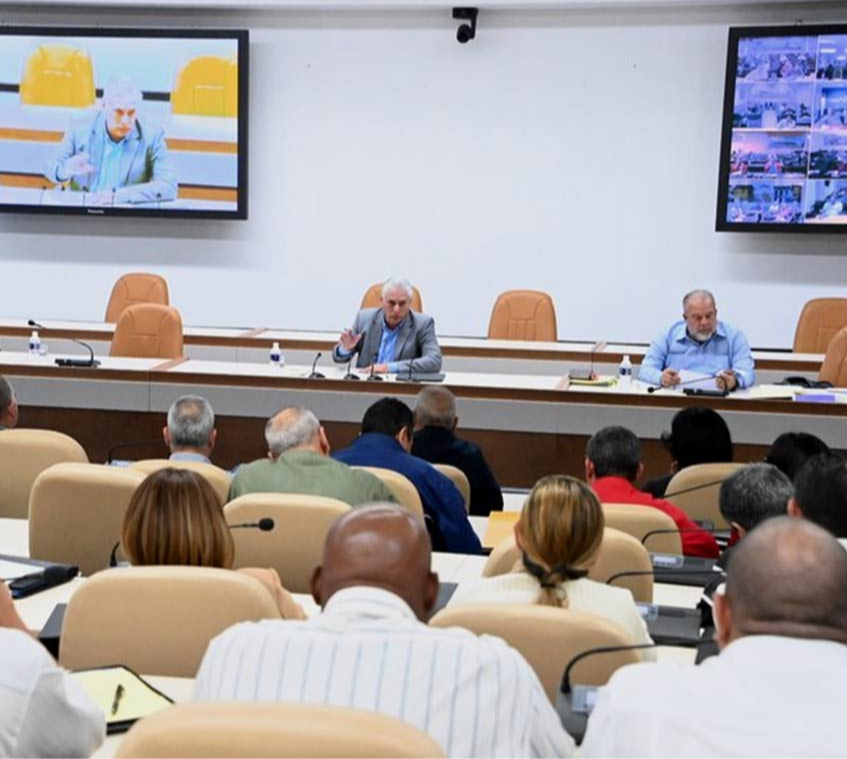
Cuban President Miguel Díaz-Canel urged on Saturday to promote the transition to the use of renewable energy sources (RES) as part of the island's development strategy.
Havana, February 4 (RHC) -- Cuban President Miguel Díaz-Canel urged on Saturday to promote the transition to the use of renewable energy sources (RES) as part of the island's development strategy.
In a meeting with representatives of the state business sector, the Cuban head of state said that the country's energy problem also involves the concepts of efficiency, among others, so he called to solve this problem to release foreign currency to support productive processes.
He pointed out that, on the other hand, the Antillean nation must comply with international commitments on the reduction of the pollutant load due to CO2 emissions.
We cannot remain last in the face of the tendency of the international market to penalize products obtained with the use of fossil fuels, he said.
He also said that we should work to "develop a sixth sense in our people, especially in decision-makers", so that whatever we are doing or are going to do in the energy field, we look for applications that can be applied to renewable energies.
Cuba intends to generate 29 percent of its electricity from these sources by 2030; in that decade it must reach 100 percent of generation based on national energy sources (NES), that is, crude oil and accompanying gas and REFs - at a 50/50 ratio.
By 2050, the energy transition must be completed: produce one hundred percent of electricity with FRE.
At the meeting, held at the Palace of Revolution in videoconference format, it was explained that a team with representation from different agencies of the Central State Administration, OSDEs and experts from universities, are working on a proposal for a new policy for the energy transition and its regulatory framework.At present, 95 percent of electricity production in Cuba is based on the use of fossil fuels, but progress is being made to reverse this situation.
Although only five percent is generated from renewable energy sources, the country seeks to eliminate or reduce imports of fossil fuels and promote renewable energy sources, mainly solar photovoltaic, wind and sugarcane biomass.According to the Presidency's website, the experts pointed out at the meeting that Cuba has a high wind energy potential, mainly in the northern coast of the eastern provinces, but also in western areas.
It has also been proven that during peak demand hours, when it gets dark and photovoltaic solar energy decreases, the wind speed increases, which favors a complement between one and the other energy source, they said. (PL)

